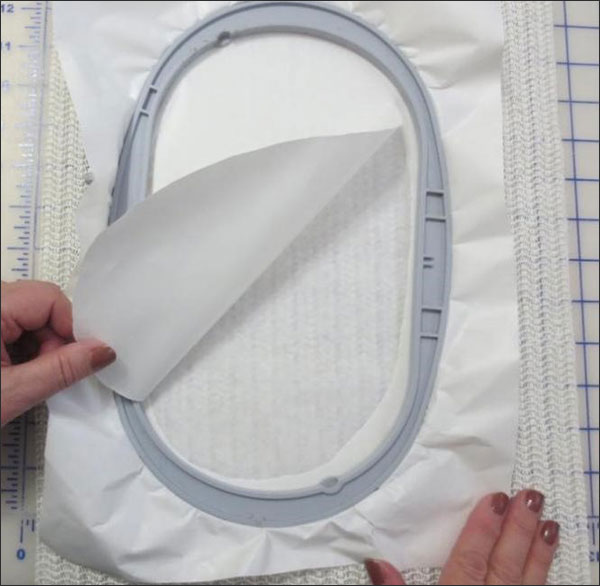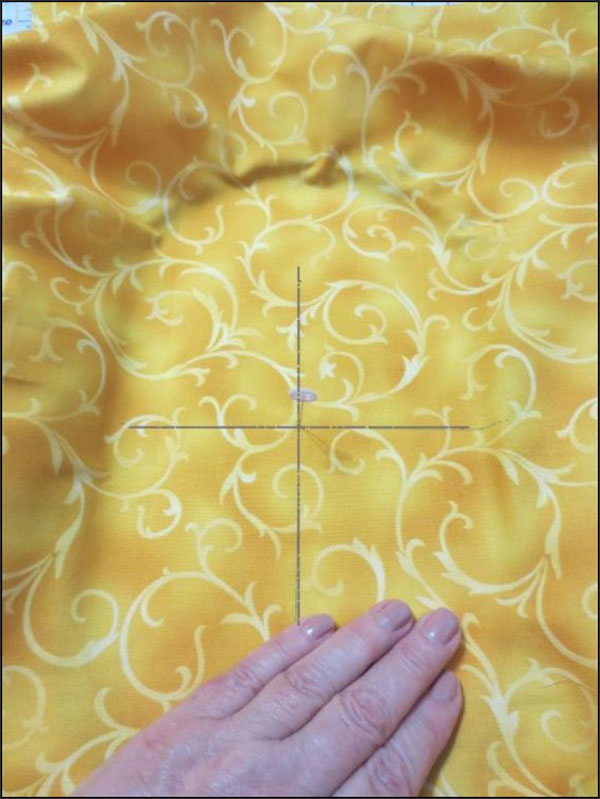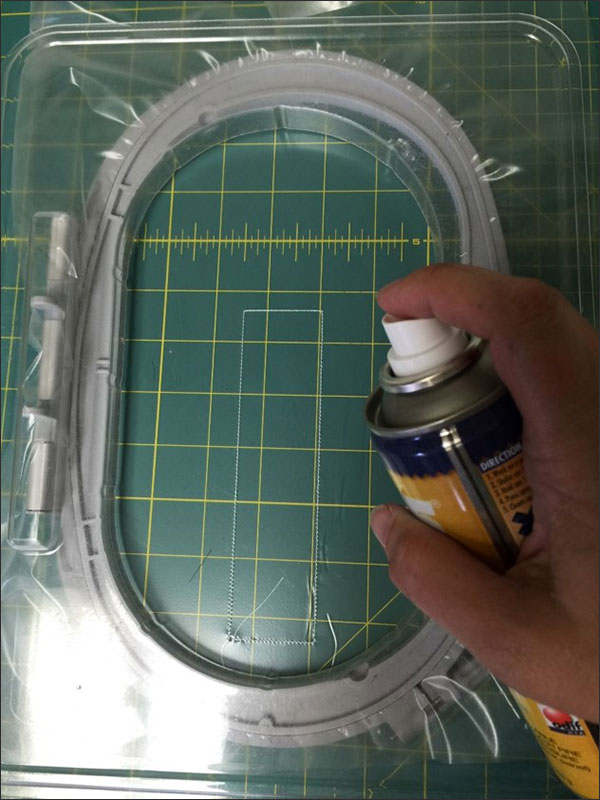Hoopless Embroidery
As often as possible, fabric and stabilizer should be hooped together. This gives the best stability to the fabric and will create the best result. However, there are times when an item cannot be hooped. This may be because of the shape of the item, or the location where the embroidery will be placed on the item.
When an item cannot be hooped, we will use a float method. This is also sometimes called hoopless or unhooped embroidery. There are three float methods to choose from: a “peel and stick” method, a “wet and stick” method, or a “spray and stick” method.
Some types of items that may be unhoopable include bags, baby items, linens, or other ready-made items. Ready-made clothing should be hooped when possible, but some areas, like hems and collars, cannot be hooped.
Peel and Stick Method
The most popular method to hoop an unhoopable item is to use a paper-backed adhesive stabilizer. This method is quick and easy. Paper-backed adhesive stabilizers are sometimes called “pressure sensitive adhesive” stabilizer. This is because the fabric sticks to the adhesive when you press the fabric to it (with pressure, not an iron).
OESD offers three pressure sensitive (sticky) stabilizers: StabilStick TearAway, StabilStick CutAway, and AquaMesh Plus. Choose the type of sticky stabilizer by the type of project – StabilStick TearAway for Wovens, StabilStick CutAway for knits or heavy designs, and AquaMesh plus for sheer projects or projects where all the stabilizer must be removed.
To use a paper-backed adhesive stabilizer, hoop the stabilizer alone with the paper backing side up. The paper side is the smoother/shinier side of the stabilizer. The stabilizer side will be facing the back.
Next, score the paper backing only with a pin and peel away the paper backing, exposing the adhesive.

Mark the center of your hoop onto your stabilizer using your hoop’s template. Mark the center point of your design onto your project.
Next, place the item to be embroidered onto the stabilizer, aligning the center point with the mark on the stabilizer, and smooth it into place.

Make sure there is as much contact as possible between the project and the adhesive. The more the fabric can be touching the stabilizer, the better. Use friction to be sure the project is firmly adhered to the stabilizer. This will not make the stabilizer harder to remove.
To remove the stabilizer after embroidery, simply peel it away from the project and then tear, cut, or wash the remainder away, depending on which type of stabilizer you chose.
Wet and Stick Method
The second method for unhooped embroidery is using a water-activated adhesive stabilizer. HydroStick is a stabilizer with a water-activated adhesive coating. This is the most secure method of all three methods. HydroStick is a great choice for items that don’t want to lay flat, like hats or shoes.
To use HydroStick, hoop the stabilizer with the adhesive (shiny) side up. Mark the center of the hoop onto the stabilizer on the back side of the hoop. Mark the backside of the hoop – as marks on the front side of the hoop could get washed away when the adhesive is activated.
To activate the adhesive, lightly moisten the stabilizer with a damp sponge. Place the item onto the stabilizer and smooth in place. The item will become secure once the adhesive dries completely. Allow the adhesive to dry before embroidering. Once dry, the item is very secure and will not peel away from the stabilizer during embroidery.
Embroider the item as usual. When the embroidery is complete, remoisten the adhesive to remove. Do not attempt to remove the stabilizer until the adhesive has been remoistened. Once the stabilizer is peeled away from the project, tear away the remaining stabilizer.
Spray and Stick Method
The last method is to use a spray and stick method. With this method, choose any stabilizer that is not already adhesive. This method give you a lot of flexibility, as you can choose the exact weight and type of stabilizer you need for your project. It is also the most economical method.
For this method, as with the other two, hoop your stabilizer by itself. If using a non-adhesive stabilizer, there is not a right or wrong side to the stabilizer. Mark the center of the hoop onto the center of the stabilizer. For in-the-hoop projects, you may not need to mark the hoop, as the design will stitch a placement line for you.
After marking the stabilizer or stitching the placement line, lightly spray the stabilizer within the hoop with a temporary adhesive spray. OESD recommended 505 Temporary Spray Adhesive. This spray is odorless and colorless, and dissipates with air or washes away completely. You may wish to use a piece of cardstock or plastic to guard the hoop itself from getting sprayed with adhesive.

As with the pressure-sensitive adhesive, it is important to get as much surface area of the fabric attached to the stabilizer as possible. Use friction to secure the fabric to the sprayed stabilizer. With the spray method, removal is easy. Simply peel the fabric from the stabilizer and then cut, tear, or wash away any remaining stabilizer.
With all three methods, it is important to keep the excess project out of the way during embroidery. Use tape, clips or pins to keep the project out of the way during embroidery. Use a chopstick or pencil to help hold the excess fabric away from the needle during stitching. However, secure your excess fabric, it is recommended to supervise your project during embroidery when using a hoopless method.
This material is © OESD, LLC and may not be reproduced or published without permission.
